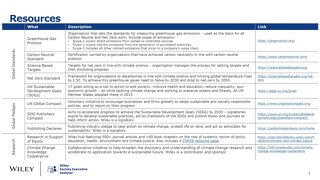successful-publications-in-an-open-world
July 29, 2019
With the push towards Open Access in the scholarly publishing community, now’s the time to begin thinking about what this means for your publication programs. Some funders, institutions and researchers are calling to make research more accessible and more transparent, with the goal of accelerating the pace of discovery. Change on this scale can prompt a great deal of thought, and with careful planning, we can successfully prepare for a future in which Open Access plays a more significant role for all of us.
At our recent Society Executive Seminar, I spoke about how societies might begin to prepare for a more substantial transition to OA. As a global and multi-disciplinary publisher, it is Wiley’s responsibility to support researchers, regardless of their desire for OA: those who don’t have funds to publish OA will still need to publish their work in subscription and hybrid journals, and we will continue to provide these options for them. Here, though, we focus on how a society might begin to assess a journal’s readiness for a more pro-active transition and assume that there is at least some evidence that a transition is warranted.
What are some practical ways to prepare?
Assess Your Market
Although the research community on the whole is moving to a more open publishing model, interest in Open Access is neither universal across disciplines, nor the same in each country and region. When considering your journal or broader portfolio, ask yourself questions like these:
- Is a relatively large proportion of our author-base able to support gold (author-pays) open access?
- Are the communities we serve calling for OA publishing options?
- Can we maintain the editorial standards for which the journal is recognized in a gold OA model?
- Can we maintain the levels of author service we aspire to in a gold OA model?
The answers to these questions will determine the priorities of transition planning for you.
Assess how much funding for OA is available, and if the research output from your community is growing year on year. Find out if your community is asking for OA publishing opportunities. Know your market and look at what comparable journals are doing: are they moving towards OA? If they are, it indicates that funding is available, and that researchers are ready for this transition. If the answer is no, with careful planning, there could be an opportunity for you to be a first mover in your field.
Consider Your Entire Journal Portfolio
If the appetite for OA in your community is apparent, can your portfolio offer a full-range of OA publishing options? Researchers are now under pressure from funders to share more of their research findings than ever before, from the very highest impact, novel findings to incremental results that may not have apparent impact at the time of submission, but could have utility for other researchers if published. Consider launching new OA titles that fill gaps in novelty and scope. Assess your hybrid titles for their potential to flip sustainably to OA. Are your editors rejecting papers they would publish if not for budget constraints? The OA model is scalable and can accommodate growth without sacrificing quality. If your community is not ready to adopt OA publishing, there are many ways to support openness with your publications by supporting open data, open collaboration, and open recognition/reward. All of these practices improve transparency and reproducibility in research, help to support more effective discovery, and can be implemented independently of a transition to OA.
A Home For All Sound Research
Wiley has been adapting to Open Access since the movement’s inception. In 2006, we introduced the hybrid publishing model, and in 2011, we launched our first Gold OA titles to give researchers the opportunity to make their peer-reviewed work immediately and freely accessible to readers. We’re committed to providing an increasingly broad array of OA publishing options to meet today’s funder requirements and researcher needs. To this end, we’re building an OA portfolio offering top tier, highly selective titles, mid-tier community focused publications, and inclusive, sound science options. With our publishing partners, our goal is to ensure that authors will always find a home for their rigorously and ethically conducted research, and that, where OA is the preferred option, their work will be immediately accessible and discoverable to all who can benefit.












